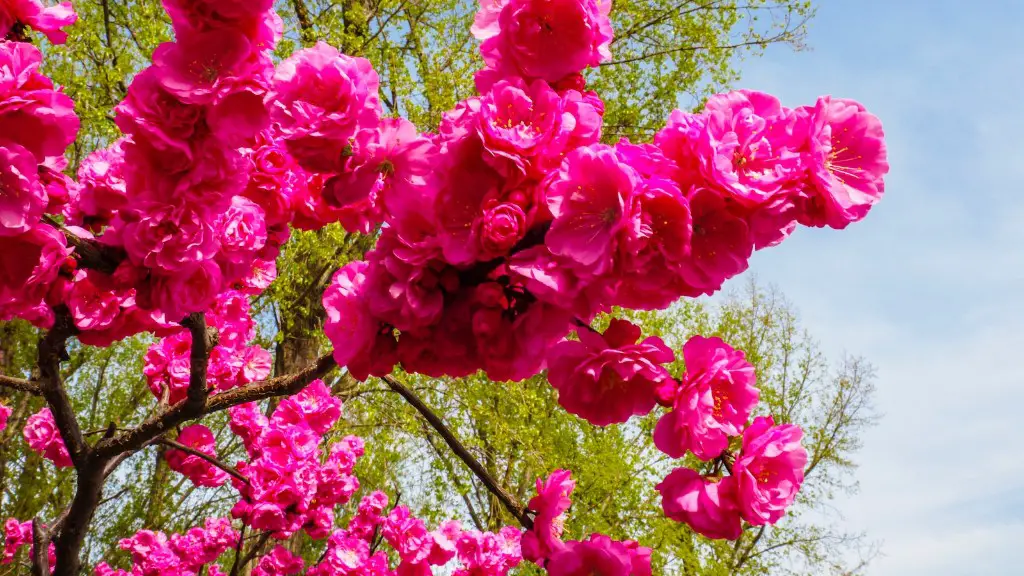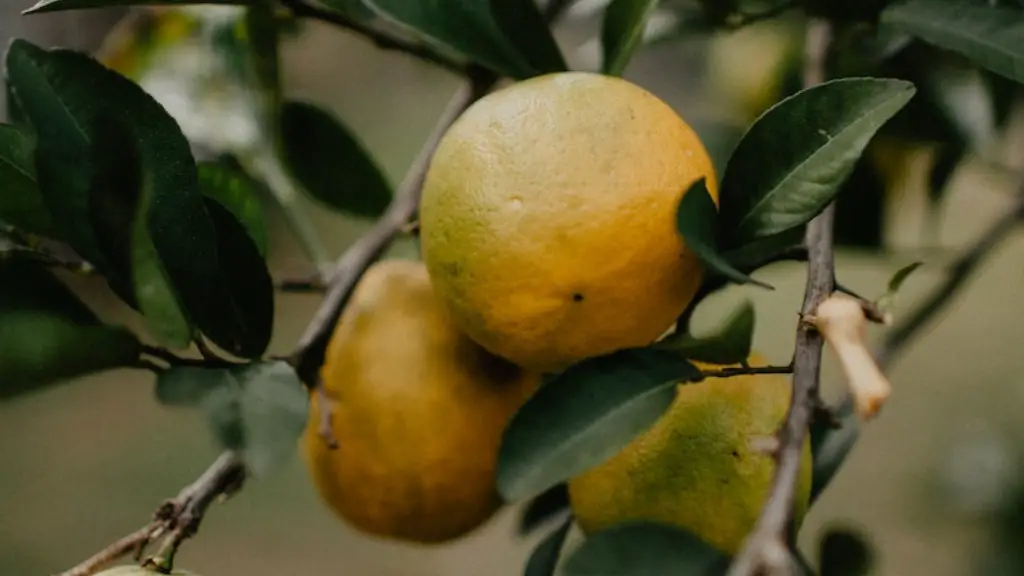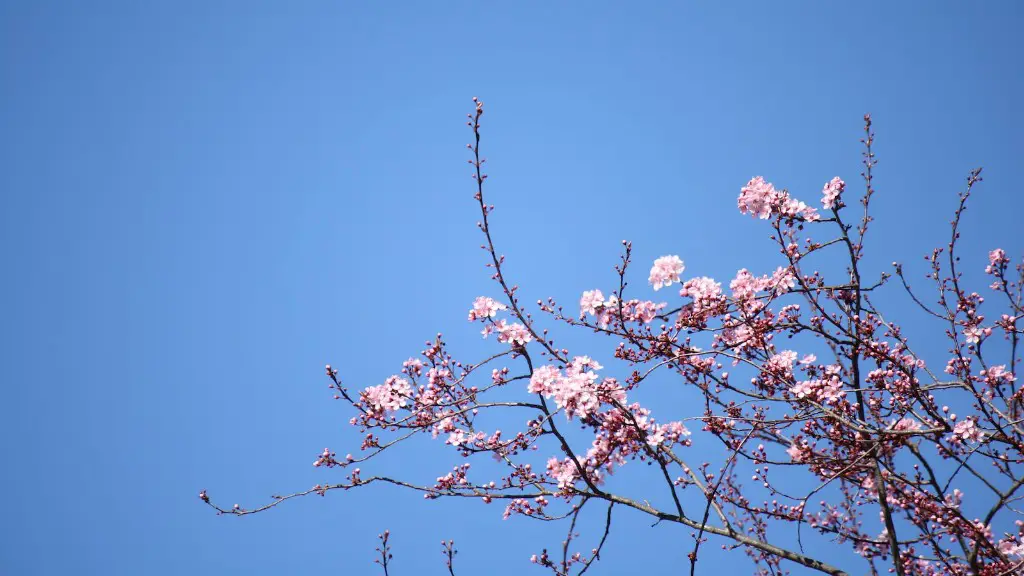Why Isn’t My Cherry Tree Blooming?
Cherry trees are popular for the beauty of their blossoms and the sweet fruits they produce. However, there can be several reasons why a cherry tree might not bloom. Some of the most common include insufficient chill hours, improper planting, disease, inadequate soil fertility, and pest infestation.
Chill hours are essential for proper flowering and fruit production, as it helps to break the dormancy of the cherry tree, allowing it to flower and produce fruit. The exact chill hours needed vary depending on the variety of cherry tree. For example, sour cherries need 800−900 chill hours each winter, while sweet cherries need only 500−600 chill hours.
If the tree has not been planted properly, it may not be able to access the water and nutrients it needs to bloom and bear fruit, even if it has all of the chill hours it needs. It is important to ensure that the cherry tree is planted in well-drained soil, and that it is receiving the correct levels of sunlight, water, and nutrients.
Diseases and pests can also prevent cherry trees from blooming. In some regions, plants can become infected with bacterial canker or brown rot, which can disrupt flowering and cause infected flowers and young fruits to drop from the tree prematurely. The most effective way to prevent disease is to use the appropriate fungicide or contact a pest management specialist for assistance.
If the tree is not receiving the nutrients it needs, it may not be able to produce fruits or flowers. Inadequate fertilization can result in nutrient deficiencies, leading to reduced flower production and low yields. If the soil pH is not adequate, this can also cause the tree to fail to bloom. Proper soil testing can help to determine the pH and nutrient levels in the soil.
The cherry tree will also need adequate water to produce a healthy crop. If the soil is not moist enough, or if the tree is not watered regularly, it may fail to bloom. Over-watering can also cause a cherry tree to fail to bloom, as too much water can suffocate the tree’s roots.
Common Pest Infestations
Pest infestations can also cause cherry trees to fail to bloom. Aphids are common pests in many regions and can infest cherry trees, causing them to drop blossoms and young fruits. Another common pest is the cherry fruit fly, which lays its eggs in the young fruit, causing it to drop from the tree prematurely. These pests can be controlled with the use of insecticidal sprays.
The presence of certain caterpillars can also be damaging to cherry trees. The eastern tent caterpillar and the cherry fruitworm feed on cherry tree foliage, resulting in leaf drop and reduced flowering. These pests can be controlled with the use of insect repellents or other methods.
Mites are also a common problem in cherry trees, and they can cause extensive damage to the tree if left unchecked. Mites feed on the foliage, leaving the leaves discolored, distorted, or even missing. These pests can be controlled with the use of miticides or insect sprays.
Wild animals can also cause cherry trees to fail to bloom. Birds and rodents such as squirrels and mice can feed on the flowers and buds on the cherry tree, leading to reduced flowering and fruit production.
Dormant Pruning
Dormant pruning is the practice of cutting back parts of the tree during the winter months in order to encourage new growth. This can help to shape the tree and improve the overall health of the tree by removing dead or diseased branches. Dormant pruning is especially beneficial in helping cherry trees produce more flowers, as it can help open up the tree canopy to allow more sunshine to reach the branches.
When dormant pruning, it is important to pay attention to the angle of the cuts and to avoid cutting into the trunk. In addition, only a certain amount of pruning should be done, as cutting too much can cause stress to the tree and lead to poor flowering. It is important to trim back any crossing or weak branches and to thin the tree canopy in order to encourage more flowers.
Fertilizer Analysis
Fertilizers can also help to promote better flowering in cherry trees. A fertilizer analysis can help to determine the best fertilizer for the tree. Generally, cherry trees need a balanced fertilizer with nitrogen, phosphorus, and potassium. It is important to feed the tree in the proper amounts and at the right times, such as in early spring when the tree begins to flower and in the summer after the fruit has set.
In addition to fertilizer, it is important to keep the soil around the tree well-mulched in order to help retain moisture and nutrients. If the soil is poor, it is a good idea to apply a soil acidifier, such as sulfur, in order to reduce the soil pH and create a better environment for the tree to thrive.
Insecticides, Miticides, and Fungicides
In order to control pest infestations and diseases, it may be necessary to apply insecticides, miticides, and fungicides. These products should be applied only when necessary and according to label directions in order to prevent unnecessary damage to the tree and surrounding environment. It is also important to be aware of the regulations on spraying chemicals, as some jurisdictions have restrictions on their use.
It is important to note that chemical sprays should be used as a last resort, as there are often more natural or organic methods of pest control available. For example, companion planting, crop rotation, and the use of beneficial insects can all help to keep pests in check without the need for chemical sprays.
Other Considerations
In addition to the above factors, there may be other issues that can cause cherry trees to fail to bloom. Environmental stressors such as drought, extreme temperatures, and wind can all reduce the tree’s ability to flower and set fruit. Age can also be a factor, as older trees may not have the energy to produce large amounts of flowers.
It is important to note that some cherry tree varieties may not bloom every year. A tree may skip blooming for a season and then come back with a healthy crop the following year. This is normal and should not cause concern.
It may also be necessary to wait several years for a cherry tree to produce a healthy crop. Young trees may not be mature enough to produce abundant blossoms, and it is important to give the tree time to reach its full potential.
Conclusion
It is important to consider all of the above factors when trying to determine why a cherry tree is not blooming. Each of these can cause the tree to fail to flower or set fruit, and it is important to identify the underlying issue in order to help the tree reach its full potential.




